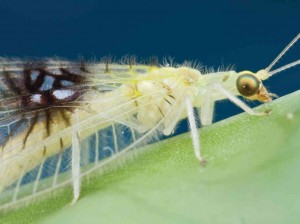We are all familiar with social media sites such as Facebook, Instagram, Flicker, Twitter, Youtube, Pintrest, Blogger, etc. We commonly think of these sites as ways for people to share thoughts, ideas, photos, interests, and news. However, how reliable are these sites for facts and discoveries?
Turns out they can be pretty reliable. Last fall Hurricane Sandy struck the eastern seaboard bringing mass destruction to New York and New Jersey. In a rare instance, Time Magazine released its Instagram to five photographers tasked with documenting the impacts of Sandy. Due to electrical inconsistencies, Instagram became the fastest way to inform the public of breaking news. During this time I was studying abroad in Copenhagen, Denmark and relied heavily on this outlet for updated information on the storm’s impacts. Times photographers used Instagram to make breaking news accessible to the public.
What about the flip side – taking information from the public and making it available to experts?
In 2011 this is how a new species of lacewing (Order Neuroptera) was discovered. Guek Hong Ping, who goes by Kurt, posted over 7,000 picturesof a variety of organisms (frogs, snakes, beetles, bugs, birds, and lacewings!) on the photo sharing website Flickr. (If you have time, I encourage you to check out his great pictures.) A close-up of a green lacewing with unusual black lines and blue flecks on its wings caught Shaun Winterton’s expert eye.

Green lacewing - Semachrysa jade - discovered through collaboration over social media (Photo by Guek Hong Ping)
Winterton, a senior insect biosystematist (meaning he studies taxonomy based on the study of genetic evolution of populations) at the California Department of Food and Agriculture, suspected this was a never before described species of lacewing. He promptly contacted Kurt but was disappointed to learn that the lacewing had stuck around only long enough to be photographed. Without a specimen to fully analyze and serve as the type, it would be impossible to determine if this truly was a new species.
As I learned this past summer through my internship at the Smithsonian’s National Museum of Natural History type specimens are the golden key. They serve as the first example of a named species and represent the defining features of the taxon. So without a specimen to study and compare to already identified lacewings, this “new” (I’m putting new in quotes since this species is merely new to being recognized by the scientific community and not new to the world) species could not be confirmed or named.
Fortunately for the scientific community, a year later Kurt returned to the Malaysian forests where he had first photographed the insect and captured the lacewing of interest. This lucky insect was shipped to Steve Brooks, a research entomologist at the Natural History Museum in London. He compared it to the lacewings in the museum’s collections and found a match with an unnamed specimen already in the collection. The findings and details of this newly named species, Semachrysa jade were published in 2012 in the scientific journal ZooKeys.
A point of controversy for many general readers of this discovery was that the lacewing was named not for Kurt but for Shaun Winteron’s daughter, Jade. However, I think it’s important to keep in mind that we don’t know all the details concerning the naming process. Maybe Kurt wasn’t interested in having the lacewing named after him (although, I’m not sure why he wouldn’t be – that would be pretty awesome).
I think the “discovery” of the new lacewing species via a personal Flicker account is an excellent example of how social media connects people and facilitates collaboration between scientists and “ordinary” people. The world seemingly is becoming more and more connected via smart phones rapidly sending texts and snapchats, social media serving as the host for photos, comments, and opinions, and people constantly checking and rechecking these sources. The example of the Times using social media to make news available to the public reveals how major news agencies are realizing, accepting, and utilizing social media sites to reach their audiences. While Kurt most likely did not intentionally post the picture of the lacewing on Flicker to be identified as a new species, this shows how social media successfully connected people of different backgrounds and achieved a scientific discovery.
This story should give budding naturalists and researchers alike hope that by sharing their discoveries with the world they can discover and learn together. While I do not have an extensive Flicker account dedicated to pictures of interesting and awesome organisms (as Kurt does), I consider this to be a telling tale. By sharing images or writings of what you’re interested in you can reach out to others either knowingly or not and could possibly discover a new insect species! If this ever happens to me, I know that I’ll think extra carefully about the name.
